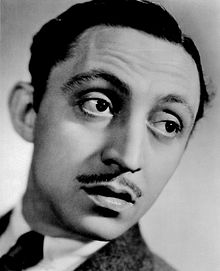
Mischa Auer
Russian-born American actor (1905–1967) / From Wikipedia, the free encyclopedia
Dear Wikiwand AI, let's keep it short by simply answering these key questions:
Can you list the top facts and stats about Mischa Auer?
Summarize this article for a 10 year old
SHOW ALL QUESTIONS
Mischa Auer (born Mikhail Semyonovich Unkovsky (Михаил Семёнович Унковский; 17 November 1905 – 5 March 1967) was a Russian-born American actor who moved to Hollywood in the late 1920s. He first appeared in film in 1928. Auer had a long career playing in many of the era's best known films. He was nominated for the Academy Award for Best Supporting Actor in 1936 for his performance in the screwball comedy My Man Godfrey, which led to further zany comedy roles. He later moved into television and acted in films again in France and Italy well into the 1960s.
Quick Facts Born, Died ...
Close
